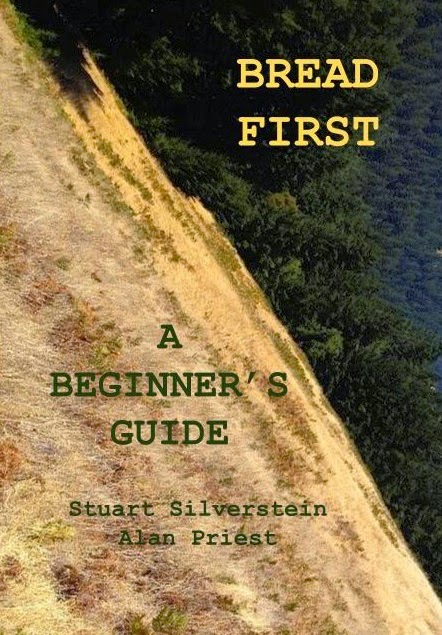Base complete, insulated, top slab and firebricks in place
Building the Base
Lay the rocks in dry. After going up about 12 inches, mix up some mortar and with your trowel and/or gloved hand, work the mortar between the rocks on the inside of the base. That should do it, but don’t count on the mortar to keep your rocks from falling over. Use your bag of mortar mix, not your bag of concrete mix. If you want to look at mortared joints (nothing wrong with that), than mortar the outside as well. Only mix up a little mortar at a time because what’s left over can’t be saved. If you do have left over mortar, use your imagination and make some art objects.
Now it is time to start filling the oven base cavity. Begin to fill the inside of the oven base with rubble such as stone, broken bricks, broken concrete blocks, and assorted iron objects. In between the rubble, dump in some gravel, tamp it lightly, and be careful that you’re not putting pressure on the rocks you’ve just laid up. Don’t add any organic material to the rubble because it will break down and weaken the mass of rubble. Your rubble and your rock base have to be nice and solid all over because they’re going to support a lot of weight.
Continue with your rock base, using mortar between the rocks, and go up another 12 inches. Fill the interior with more rubble, just like before, but smooth off the top of the rubble with sand or gravel. You should now be 24 inches above your concrete slab, and that’s where you want to be. Finally, go up another 12 inches with the rock base, using mortar between the rocks, but do not fill the top foot with rubble.
Following these instructions, your oven will have a baking height (from where you stand to top of baking hearth) of about 38 1/4 inches You can adjust the baking height by simply making the oven base taller or shorter. However, I wouldn’t go lower than 36 inches nor would I go higher than 48 inches. Low ovens require less work to construct, while high ovens require more.
That said, it still is not so simple to determine the correct baking height. If you’re over six feet tall, than you would want a higher hearth than someone who is only five feet tall. A tall person doesn’t want to constantly have to bend over to peer inside the oven, and yet, loading firewood and maneuvering breads around in an oven with a very high hearth takes more physical effort.
When I had a brick oven café, I built the hearth very high, but that’s because I wanted patrons to be able to see the fire in the oven when they entered the café. This presented a problem, however, because we had some very short bakers who really struggled to work the oven. The photo clearly shows that the oven was much too high for the young baker. Give some serious thought to your hearth height because it’s something that would be very difficult to change later on.
--
www.ibreadhunter.blogspot.com






No comments:
Post a Comment